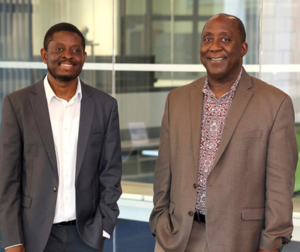SUNY researchers claim super-lubricity achieved with near zero friction
Utica, NY – The president of SUNY Polytechnic Institute (SUNY Poly), Dr. Winston “Wole” Soboyejo, and postdoctoral researcher, Dr. Tabiri Kwayie Asumadu, have published a revolutionary new paper titled, “Robust Macroscale Superlubricity on Carbon-Coated Metallic Surfaces.” This paper explores an innovative approach to reducing friction on metallic surfaces – a significant advancement that could have major real-world impacts.
The study shows that superlubricity – a state with virtually no friction that was once believed to only be achievable at nanoscale – can now be maintained at macroscale for extended time periods under regular atmospheric conditions by employing sustainably produced carbon coatings made from biowaste.
These findings are significant for a number of practical reasons. In the automotive industry, more than 30 percent of fuel in passenger vehicles is used to overcome friction, so these novel coatings can help to drastically improve fuel efficiency. In manufacturing and industrial machinery, they could help to reduce wear and tear, leading to massive cost savings and decreasing the 1-4% of countries’ GDP that is spent on friction-related equipment issues. In electronic devices, friction at a minute scale can present large-scale challenges that coatings could help to alleviate.
“This research truly could touch most industries,” said Dr. Asumadu. “From biomedical to energy sectors to nearly every kind of manufacturing, this approach could help to extend the life of machine parts, reduce maintenance and replacement costs, and create a more sustainable industrial future.”
The paper was published in Applied Materials Today by a group of eight materials scientists collaborating across Africa and the Northeastern United States, including Mobin Vandadi, Desmond Edem Primus Klenam, Kwadwo Mensah-Darkwa, Emmanuel Gikunoo, Samuel Kwofie, and Nima Rahbar.
“My colleagues and I are extremely proud of this work, particularly for the environmental and economic implications it could have,” said Dr. Soboyejo. “We look forward to seeing the breakthroughs in friction management technologies that will happen as researchers operationalize these approaches.”

